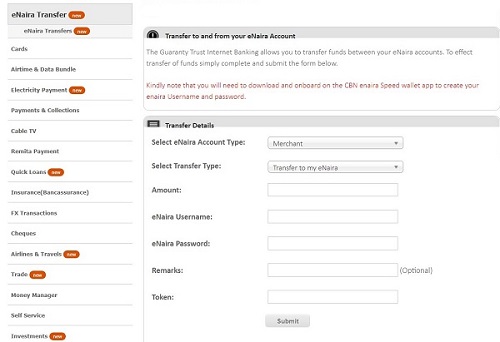Last updated on September 2nd, 2023 at 10:34 pm
Imagine you have a son named Johnson who is just 4 years old and you want to start saving money for his future college education. That’s where a 529 Plan comes in.
Table of Contents
What is 529 Plan?
529 plan is a ‘start-early’ type of savings investment account that is specifically designed to be used for college education costs. Its tax savings make it the largest and most successful pre-paid programme in the United States.
At least there is one type of qualified tuition plan across the states and the District of Columbia. A group of private colleges and universities sponsor a prepaid tuition plan
It is a tax-advantaged savings account that is specifically designed to help you save and take advantage of potential investment growth to support your child’s future education. It is one of the best long-term financial plan for education.
How the name “529 Plan” came about
Legally known as “qualified tuition plans”, it derives its name from Section 529 of the U.S. Internal Revenue Code that created the future education savings plan.
How 529 plan works
A parent opens a 529 Plan account for his son (Johnson) and contributes money into it regularly, similar to how you might put money in a piggy bank.
The money has the potential to grow over time because the money you put in the account is invested by professionals. This makes the money grow faster than allowing your money to sit in a regular bank account.
Here is the cool part: The money you put in a 529 plan grows tax-free. This means that gains from the investment are not subject to federal income tax, provided you use the money for qualified education expenses.
Types of 529 plans
The 529 qualified tuition plans is divided into two major categories:
- Prepaid tuition plans and
- Education savings plans.
Prepaid Tuition plans
Prepaid tuition plans allow account holders or subscribers to purchase credits or units from colleges and universities that are participating in the plan for future tuition and mandatory fees at current prices for the beneficiary.
How prepaid tuition plans work
Prepaid tuition plans have some limitations attached to it. For instance, it doesn’t allow the subscriber to prepay for tuition for elementary and secondary schools.
Also, it can’t be for future room and board in colleges and universities
In most cases, residency is mandatory for the beneficiary because prepaid tuition plans are state-sponsored.
Prepaid plans are not guaranteed by the federal government.
Some state governments do not guarantee the money paid into the prepaid tuition plans that they sponsor. The latter comes with a risk.
In a situation where the prepaid tuition payments aren’t guaranteed, beneficiaries may lose some or all of their money in the plan if the plan’s sponsor has financial challenges.
The beneficiary must attend a participating college or university to enjoy the full benefits of the prepaid plans.
An enrollment or application fee and ongoing administrative fees may apply.
Education Savings Plans
Education savings plans are where the beauty and benefits of qualified tuition plans lie.
How education savings plans work
Education savings plans allow savers to open an investment account to save for the beneficiary’s future qualified higher education expenses.
Unlike prepaid plans, education savings plans can be used at any college or university, even at non-U.S. higher institutions.
Up to $10k can be accessed per year to pay tuition at any public, private, secondary or elementary school.
A subscriber has the privilege to choose among a range of investment portfolio options, which may often include exchange-traded fund (ETF), various mutual funds and a principal-protected bank product.
Unlike Prepaid tuition plans which require residency in most cases, only a few have residency requirements for the saver under the education savings plans even as they are sponsored by the state governments.
Some of the fees that are peculiar to education savings plans include annual account maintenance fees, ongoing program management fees, and application fees.
State sponsors collect some of these fees while some are collected by the plan manager.
When the education savings plans are sold directly by the states, then you will not have to pay additional broker-charged fees.
Participating in an automatic contribution plan, accepting electronic-only delivery of documents or enrolling online or maintaining a large account balance in education plans may make you qualify for some benefits, including a waiver or reduction in maintenance or administrative fees
What expenses does a 529 plan cover?
Qualified education expenses under 529 plan cover the following education expenses:
- Books and supplies,
- Room and board,
- Computer and internet connection,
- Tuition fees,
When Johnson is ready for college, you can use your savings in a 529 plan to cover these costs by paying tax on the earnings.
You start contributing $400 per month, for instance, to John’s 529 plan when he is just 4 years old, you would save $67,200 by the time Johnson is 18 years old and ready to go to college.
Are 529 plans the same across the U.S?
NO!
Each state has its own 529 plan and they may offer different investment options and tax benefits. You may compare the benefits each state offers and choose to open a 529 plan that offers a plan that suits your needs.
Fees associated with 529 plan
When investing in 529 plans – whether it is a broker or direct-sold plan – you should carefully study the fees and expenses that come with it. The fees can invariably lower your returns.
We’ve pointed out the application fees under the two types of 529 plans above, check them to know what charges you are likely to incur.
Conclusion:
Investing in a 529 plan comes with a lot of benefits, including savers special tax, but this depends on the state governments and the type of plan a beneficiary chooses. Whatever the benefits are, it is very important to understand the tax implications of investing in a 529 plan. You should talk to an investment advisor if you are in doubt or when you don’t understand the terms and conditions of the plan.











